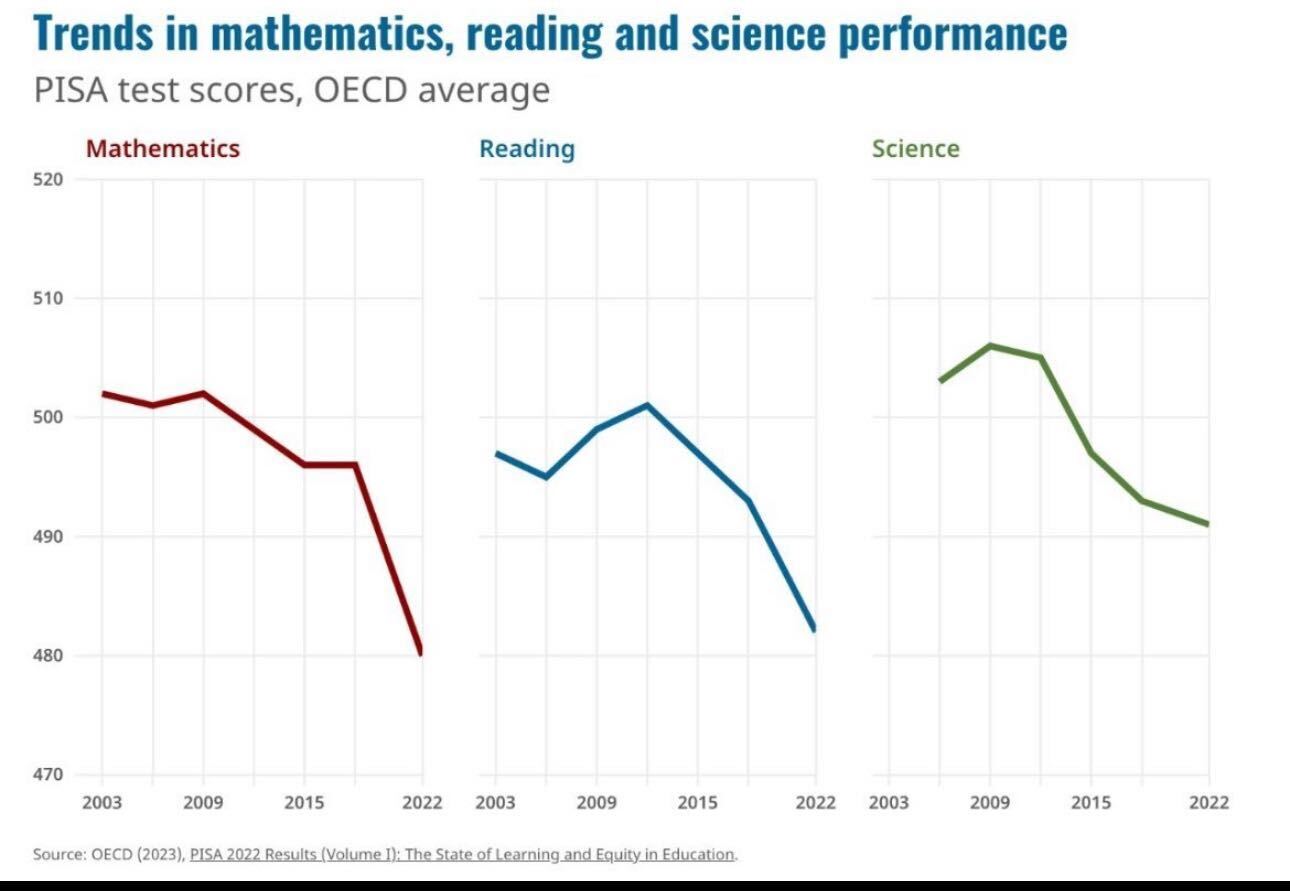
Image Source: https://www.oecd.org/publication/pisa-2022-results/
The recent PISA test scores for OECD countries reveal a concerning trend: a noticeable decline in mathematics and science performance among students. These subjects are pillars of modern education, underpinning critical thinking and problem-solving skills necessary for the workforce of tomorrow. Reading, while seemingly stable, also requires renewed focus to ensure comprehensive literacy. In the wake of these findings, it's imperative to find innovative approaches to re-engage students. Robotics education offers a multifaceted solution to this challenge, providing a dynamic learning experience that can reignite students' passion and proficiency in these key areas.
Robotics and Mathematics: A Perfect Pairing
Mathematics is often taught in abstraction, leaving students disconnected from its practical applications. Robotics bridges this gap. By integrating robotics into math education, numbers and formulas leap off the page and into the physical world. Calculating trajectories, programming precise movements, and optimizing design based on geometric constraints, students use math in real-time, fostering a deeper understanding and appreciation of the subject. The engagement that comes from seeing math come to life can halt the decline observed in the PISA scores and build a generation of mathematically proficient innovators.
Reading Comprehension Through Technical Documentation
Robotics transcends its STEM origins by contributing to improved reading comprehension. When students work with robotics, they encounter technical documentation that requires careful interpretation. They learn to follow complex instructions, interpret coding manuals, and understand nuanced language used in technical settings. This exposure not only enhances their ability to comprehend difficult texts but also prepares them for the intricate reading required in many professional and academic fields.
Science Education Revitalized Through Robotics
The scientific decline highlighted by the PISA scores can be countered by the empirical nature of robotics. Science is inherently about discovery and experimentation—robotics serves as an ideal conduit for these activities. As students design and program robots, they apply scientific principles and engage in the scientific method, hypothesizing, experimenting, and observing real-world results of their programming and design decisions. This hands-on approach leads to a more profound understanding of scientific concepts, which is essential for improving science education outcomes.
The Advantages of Robotics in Engaging Students
The advantages of integrating robotics into educational curricula are manifold. Robotics is inherently interdisciplinary, combining engineering, technology, and computer science, which collectively stimulate a wide range of cognitive skills. It encourages collaborative learning, with students often working in teams to solve complex problems. Furthermore, it promotes creativity and innovation, as there is rarely a single correct answer in robotics; students must innovate and think outside the box. Moreover, robotics teaches resilience and perseverance, as students learn that failure is often a step towards success and understanding.
A Call to Action for Education Systems Worldwide
In conclusion, the declining trends in mathematics, science, and reading performance are not just a statistical concern but a real-world issue that demands immediate and innovative solutions. Robotics education provides a tangible, engaging, and effective means of addressing these educational shortfalls. It's a call to action for policymakers, educators, and communities to invest in robotics as a cornerstone of modern education. By doing so, we can equip students not only to improve their PISA scores but also to excel in a world where interdisciplinary knowledge, technical skills, and adaptive learning are paramount. Robotics isn't just a tool for education; it's a catalyst for a global educational revival.
Discover more ways to introduce students to new and evolving STEM careers with RobotLAB!
Check our products page and start your robotics lessons with RobotLAB and our learning Platform EngageK12!